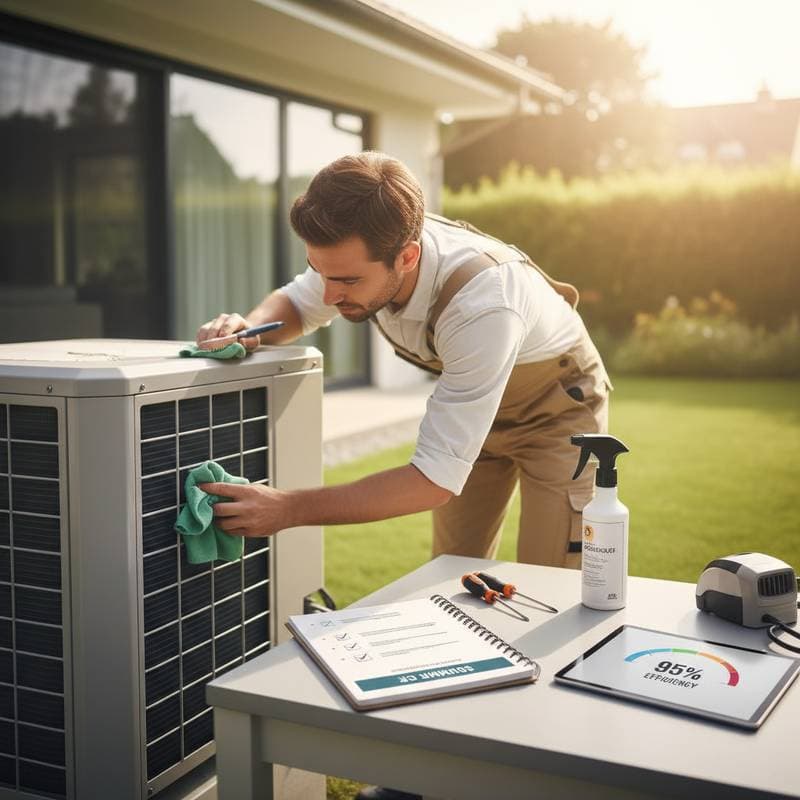Monthly Habits That Shield Your Home in 2025
Homes deteriorate gradually if neglected. Issues often emerge unseen within structures until they escalate into major, costly problems. Regular monthly maintenance distinguishes a durable residence from one that burdens finances. These practices safeguard assets, minimize urgent interventions, and sustain a secure, efficient environment.
This guide details essential monthly routines for homeowners. Each activity proves straightforward, economical, and effective against progressive deterioration. Dedicate a few hours monthly to avert hundreds or thousands in potential expenses.
Performing Monthly HVAC Checks
Heating, ventilation, and air conditioning systems form the core of indoor comfort. Neglect leads to reduced efficiency, higher energy bills, and sudden failures. Routine monthly evaluations identify issues early and promote optimal operation.
Key Tasks
- Replace or clean air filters. Dust accumulation restricts airflow; fresh filters maintain system performance and air quality.
- Examine vents and registers. Clear blockages from furniture or debris to ensure even air distribution.
- Listen for unusual sounds. Rattles or hums may indicate loose components or motor strain requiring attention.
- Inspect the thermostat. Verify accurate readings and clean the display to support precise temperature control.
Difficulty: Easy
Time: 15 to 30 minutes
Cost: Low
Professionals note that proactive filter maintenance alone can lower energy use by up to 15 percent and prolong equipment life significantly.
Monitoring Plumbing for Early Leaks
Even minor water seepage causes extensive harm over time. Unaddressed drips erode flooring, discolor surfaces, and foster mold growth. Systematic monthly reviews provide the strongest protection.
Key Tasks
- Examine beneath sinks. Activate the faucet briefly, then search for signs of wetness or condensation.
- Scrutinize toilet bases. Soft spots or discoloration suggest gradual leakage.
- Review water heater fittings. Look for rust, corrosion, or accumulated moisture indicating potential failure.
- Detect subtle water flow. With fixtures closed, any audible trickle points to concealed leaks.
Difficulty: Moderate
Time: 20 to 40 minutes
Cost: Free unless repairs arise
Early detection of leaks averts thousands in structural restoration and health-related complications.
Cleaning and Inspecting Kitchen Appliances
Kitchens endure heavy daily use. Accumulated grime, particles, and residues accelerate wear and introduce hazards. Targeted monthly upkeep extends functionality and mitigates risks.
Key Tasks
- Maintain the range hood filter. Detach and immerse in a degreasing solution; unclogged filters enhance air circulation and eliminate persistent smells.
- Service refrigerator coils. Gently remove dust with a vacuum or soft brush to optimize cooling and reduce power draw.
- Execute a dishwasher refresh cycle. Introduce vinegar or a specialized cleaner to dissolve mineral deposits and residue.
- Maintain the garbage disposal. Operate with ice and citrus rinds to hone edges and neutralize scents.
Difficulty: Moderate
Time: 45 minutes
Cost: Low
Routine coil cleaning decreases electricity demands by as much as 10 percent and adds years to appliance longevity.
Maintaining Electrical and Lighting Systems
Electrical faults develop quietly yet pose severe threats. Vigilant monthly oversight reveals indicators before outages or fires occur.
Key Tasks
- Detect heated outlets or switches. Elevated temperatures suggest circuit overloads needing resolution.
- Validate ground fault circuit interrupters. Engage the test mechanism, verify power interruption, and restore function.
- Evaluate extension cords. Discard any exhibiting frays, cracks, or wear.
- Polish light fixtures. Eliminate dust layers that retain heat and diminish bulb durability.
Difficulty: Moderate
Time: 20 to 30 minutes
Cost: Low
Monthly GFCI testing ensures immediate shutdown in faults, averting shocks in moisture-prone areas like bathrooms and kitchens.
Inspecting Doors and Windows
Gaps in seals squander energy and strain climate control units. Periodic assessments preserve thermal barriers and operational ease.
Key Tasks
- Identify air currents. Pass hands along frames to sense escaping drafts.
- Assess weatherstripping integrity. Renew any deteriorated or compressed seals.
- Clear tracks and hinges. Dislodge dirt that impedes movement.
- Apply lubricant to mechanisms. Use silicone or graphite to facilitate smooth action.
Difficulty: Easy
Time: 20 to 30 minutes
Cost: Low
Effective sealing cuts heating and cooling expenses by 10 to 20 percent annually.
Managing Outdoor Spaces
Exterior features like decks, patios, and grounds demand consistent oversight for stability and appeal. Oversight invites decay, infestations, and hazards.
Key Tasks
- Clear decks and patios. Brush away leaves and debris that retain dampness.
- Secure loose elements. Fasten or substitute unstable boards and fasteners.
- Evaluate outdoor furnishings. Wipe down and probe for corrosion or instability.
- Control nearby growth. Maintain a one-foot clearance from structures to deter water retention.
Difficulty: Moderate
Time: 45 minutes
Cost: Low to moderate
Regular vegetation management discourages pests and rodents from approaching building foundations.
Building Lasting Home Care Habits
Sustained monthly inspections cultivate proactive awareness. Familiarity with your property sharpens detection of subtle shifts. Maintain a dedicated log, whether physical or digital, to document inspections, resolutions, and pending professional services. This approach reveals trends, forecasts needs, and transforms maintenance into a seamless routine that preserves value and peace of mind.





